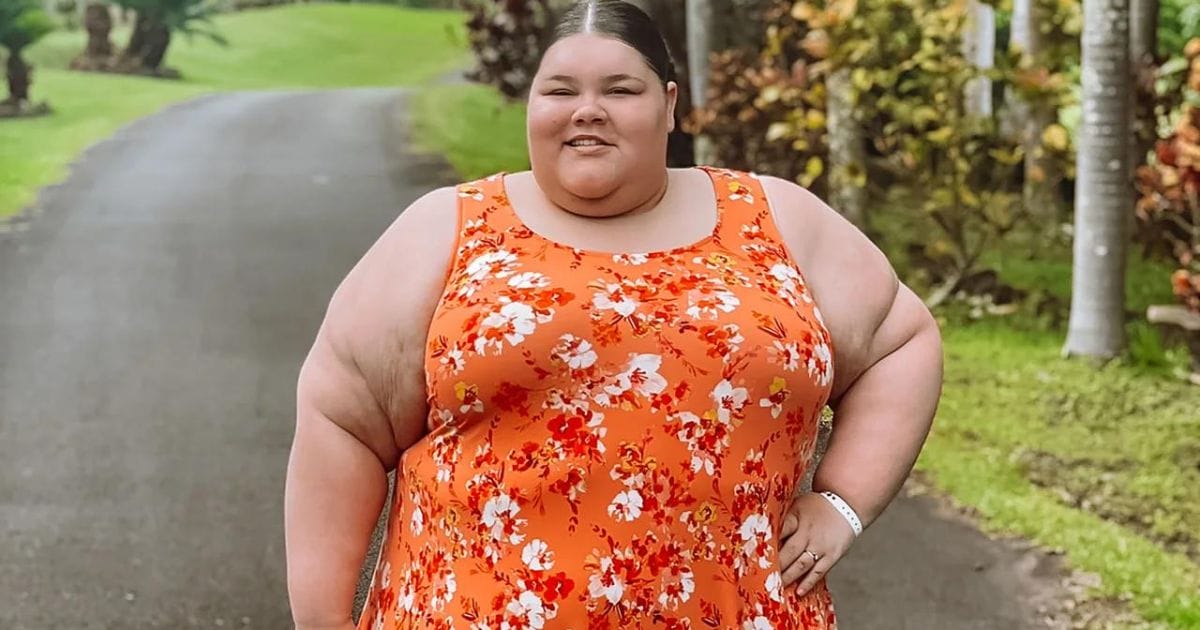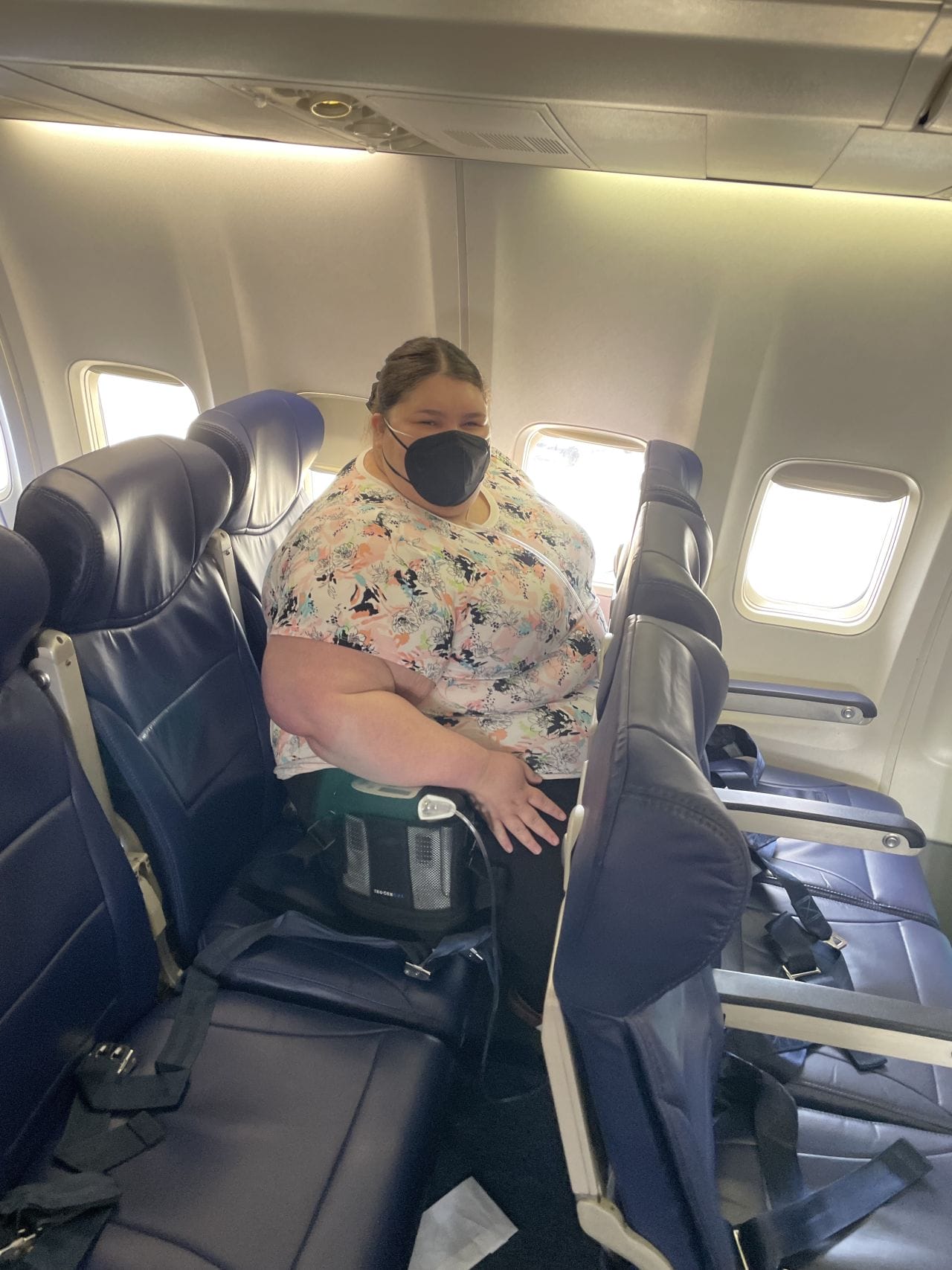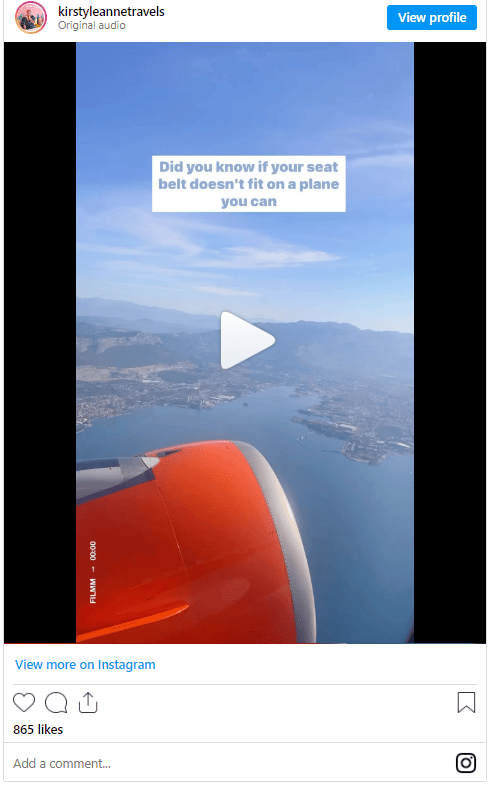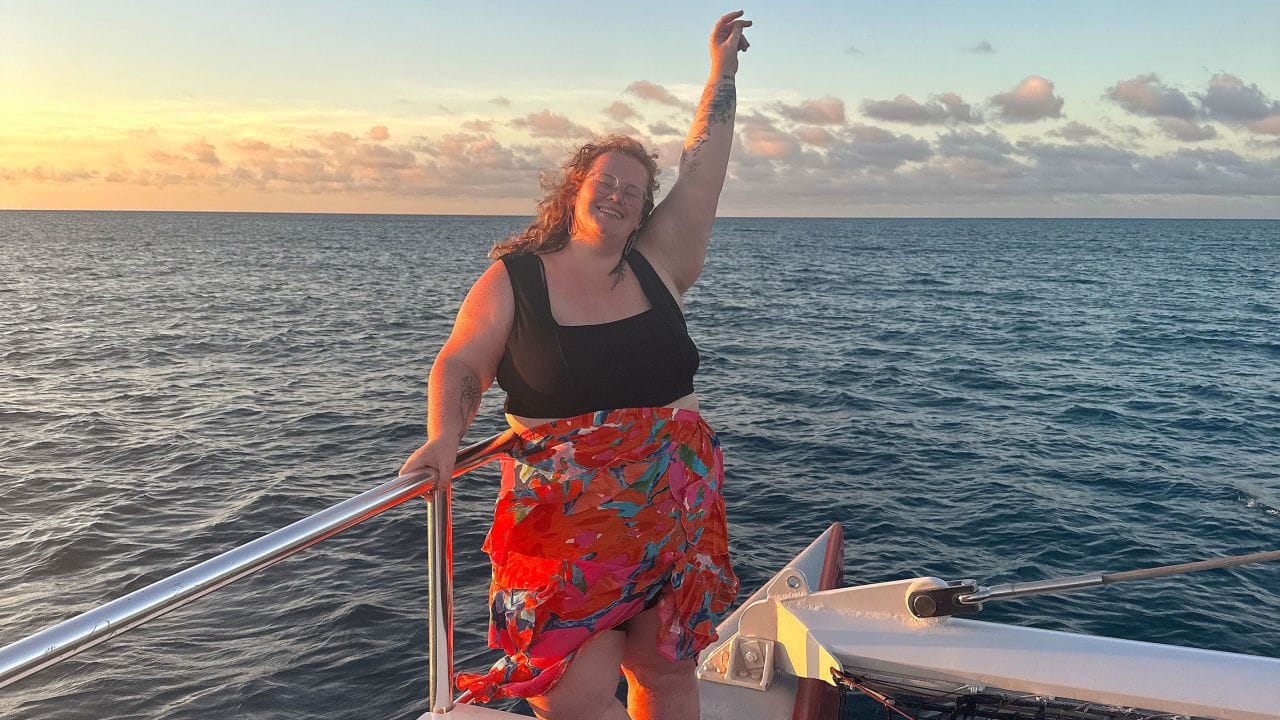Photo caption: Plus size traveler Jae’lynn Chaney launched a petition in April calling for the Federal Aviation Administration to “require all airlines to implement a clear customer-of-size policy.” (Courtesy Jae’lynn Chaney)
By Tamara Hardingham-Gill, CNN
While the average width of an airplane seat has been shrinking for decades, bodies are getting larger around the world, with experts predicting that over half of the global population will be overweight or obese by 2035.
This ultimately means that more and more passengers are likely to be finding it difficult to fit into airplane seats, and some may be hit in the pocket as a result.
Policies around plus-size travelers tend to vary from airline to airline. While a number, including United Airlines, require “customers who require extra seating” to buy an additional seat in advance, some refund the purchase if one or more seats are available after takeoff. However, there is no universal standard as such.
Different airlines have different guidelines. Some have no guidelines at all, meaning that even well-informed travelers can have trouble keeping up.
Policy confusion
In April, plus-size travel influencer Jae’lynn Chaney launched a petition urging the Federal Aviation Administration (FAA) to mandate all airlines for a comprehensive customer-of-size policy that “prioritizes the comfort and well-being of all passengers.”
“We need the policies to be a little bit more standardized,” Chaney tells CNN Travel. “At the bare minimum, we need every airline to have a policy that tells people of size how to navigate their airline.”
Charles Leocha, co-founder of airline consumer advocacy group Travelers United, shares this sentiment.
“All plus-sized passengers are appreciative of knowing the rules,” he adds. “It eliminates many misunderstandings.”
Outside of the US, the Australian Consumer Law prohibits airlines from charging passengers different amounts based on their body sizes.
Meanwhile, the “one person, one fare” (1p1f) policy, which prevented domestic airlines Air Canada, Air Canada Jazz and WestJet from charging passengers requiring an extra seat for more than one fare, was passed by the Canadian Transportation Agency in 2008.
Obesity is recognized as a disability in Canada, and passengers must be considered “functionally disabled by obesity,” to meet the requirements for a free extra seat.
However, the rule only applies to domestic flights, which means that plus-size travelers still need to buy an extra seat when going on an international flight.
Tight fit
One of the various demands listed in Chaney’s petition, which had received over 17,000 signatures at the time of writing, is that all airlines “provide accessible additional seats to customers-of-size” who may require more space or “encroach onto another passenger’s space.”
“These passengers should be provided with an extra free seat, or even multiple seats, to accommodate their needs and ensure their comfort and safety, as well as those around them, during the flight,” reads the petition.
For Chaney, who has needed a seat belt extender from a young age, the issue is a hugely personal one.
“I kind of knew that planes were not built for people like me by the time I was 12,” she says, recalling trying to tuck her seatbelt underneath her stomach so that flight attendants couldn’t see that she hadn’t been able to buckle it.
“There was a really tight fit on the seats. And being such a young child at the time, traveling without my parents was really stressful for me. Because I didn’t know how to advocate for myself.”
Chaney feels that airline policies that require plus size travelers to buy an extra seat while flying are “discriminatory,” pointing out that passengers like her are “paying twice for the same experience.”
“People with smaller bodies get to pay one fare to get to their destination,” she says. “And we have to pay two fares, even though we’re getting the same experience. If anything, our experiences are a little bit more challenging.”
United Airlines, one of the US airlines that requires larger passengers to purchase an extra seat, declined to comment.
Chaney dismisses suggestions that plus-size travelers are asking for special treatment, stressing that they are simply “asking for the same dignity and respect from an airline that someone in a smaller body gets.”
Human rights issue?
Canadian air passenger rights advocate Gabor Lukacs says he views the practice of charging larger passengers for two seats as a human rights issue.
“Being a large-size person is not a choice, as many people mistakenly believe,” Lukacs tells CNN Travel.
“There is, unfortunately, a lot of negative attention and prejudice against plus-sized people.
“But it’s not as if someone is getting up in the morning and making a decision that they’re going to be a large person.
“So through that lens of human rights, I don’t see any justification for charging these people a double fare.”
Lukacs goes on to point out that airlines don’t provide discounts to people who are smaller sized, or even children, even though they’re much lighter, and therefore “less fuel is being consumed to transport them.”
“I’d be very concerned to see this type of argument being advanced where immutable characteristics of a person are being used for assessing fees,” he adds. “It can be a slippery slope.”
According to Chaney, aside from being a “financial burden,” the prospect of paying for two seats is an added complication to an experience that is already very difficult for many plus sized travelers.
“There’s so many different things, obstacles, that are in the way,” she explains.
Chaney regularly shares tips on flying as a plus-size person on her TikTok channel and says that one of the questions she’s asked the most is, “What do I do if the seatbelt does not fit?”
“It surprises me every time that many people don’t know that seat belt extenders exist,” she adds. “And that they’re available on all flights.”
Chaney admits that having to ask for a seat belt extender “isn’t always the most comfortable experience,” particularly when faced with hostile passengers, or even flight attendants, on some occasions.
Constant challenges
“The stereotypes that surround plus-size travelers, and the hostility towards us when we’re traveling by plane is honestly horrendous,” she adds.
“It can just be such an uncomfortable experience. People treat us very much differently.”
While Chaney stresses that much of the feedback she’s received since launching her petition has been hugely positive, she admits that she’s been subject to abuse, and even death threats, from members of the public.
“I have chosen to focus on the positivity and support,” she adds.
Earlier this year, content creator and plus size travel expert Kirsty Leanne went viral after posting a video of herself struggling to fit in an airplane seat while flying with a budget airline.
Leanne, who is also the founder of website Plus Size Travel Too, says she was shocked by the sheer volume of negative comments she received after sharing the clip, which detailed many of the problems she and other plus-size travelers face while onboard a plane.
“I was sharing my experience with the airlines and showing other plus-size travelers what to expect, so I didn’t expect so many people to think that the points I made were complaints of any kind,” Leanne tells CNN Travel via email.
“I thought I would get one or two negative comments as I always do with videos talking about being plus-size, but not to the extent that I did.”
Over the past two decades, the width of the average seat has shrunk from 18.5 to 17 inches. Meanwhile, according to a study by the World Obesity Federation, around 38% of the world population are overweight or obese.
“This [shrinking seats] has had such a negative impact on plus-size travelers,” says Leanne. “So not only does it deter them from flying, but it also makes it incredibly uncomfortable for those that do choose to fly.
“With shrinking seats, there should be acknowledgement that plus-size people may require certain accommodations in order to allow them to fly safely and comfortably.”
When approached for comment by CNN, the FAA pointed to a 90-day public comment period, on minimum seat dimensions necessary for airline passenger safety, which was held last year.
“The agency is reviewing the thousands of comments it received on whether current seat size and spacing affect passenger evacuation,” the FAA said in a statement.
In 2022, Flyers Rights, a nonprofit organization, petitioned the FAA to regulate a minimum seat size, citing concerns about medical risks, including blood clotting, due to limited space, among other issues.
However, the petition was denied by a US appeals court earlier this year.
For Lukacs, decreasing airplane seat sizes are something that all travelers, not just those who are plus sized, should be troubled by.
“It is a concern, because being crammed in a very small seat could, apart from your comfort, also affect your health, in terms of risks of deep vein thrombosis,” he notes.
“I’m not sure what the science is on that today, but I could see that being a problem. And also, we’re not cattle.
“We do expect, when we board a plane, to be treated with some reasonable level of respect.”
Back in 2013, Samoa Air, the flag carrier of Samoa, previously known as Polynesian Airlines, became the first airline to begin weighing passengers at the airport.
And last month, Air New Zealand confirmed that it will be weighing passengers as part of a “passenger weight survey,” to calculate data on the weight load and distribution for planes.
The national carrier of New Zealand has stressed that the survey is voluntary.
Chaney, who last took a plane ride in April 2022, says she’s most comfortable flying with Southwest Airlines, explaining that the airline’s “customer of size and extra seat policy,” which stipulates that passengers who require extra room can purchase another seat at the time of booking and claim the money back after contacting customer service.
Open hostility
Courtesy Kirsty Leanne
When she flies with her partner Jake, who is also plus sized, the couple have to decide whether to buy four seats and sit apart, or purchase three seats between them and “just have it be a little bit of a tight fit.”
“We also make sure that our flights are only six or seven hours max, because we can’t use the restroom comfortably on the plane,” adds Chaney, who says that Jake has had passengers refuse to sit next to them.
Like Chaney, Leanne feels that it’s important to share her experiences, good and bad, while traveling, and hopes that other plus size travelers, who might be wary of getting on a plane, will see that “there’s nothing to be ashamed of.”
“Although it may be incredibly daunting and overwhelming to travel in a larger body, please do not let the experience of flying while fat put you off traveling,” she says.
“There are so many incredible things to see out there and I promise you, it’s worth it.”
According to Chaney, one of the biggest misconceptions about plus size travelers is the notion that they don’t consider how much space they take up.
“They [other travelers] think that we want to invade their space, or that we don’t care if we’re invading their space, or encroaching upon their space, especially in air travel,” she says.
“And that’s where a lot of the blatant hostility will come from. When in reality, so many people that I talk to, speak about how they try to shrink themselves.
“They try to lean up against the window. They try to make themselves as small as possible when traveling by plane, simply so that they don’t offend somebody else. So that they don’t have to face hostility or embarrassment.
“I know it’s something I think about all the time in life, no matter where I am.”
This article originally appeared on CNN.









